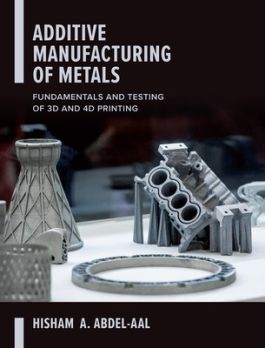Additive Manufacturing of Metals: Fundamentals and Testing of 3D and 4D Printing
Step 1. Download Adobe Digital Editions Both PC and Mac users will need to download Adobe Digital Editions to access their eBook. You can download Adobe Digital Editions at Adobe's website here.
Step 2. Register an Adobe ID if you do not already have one. (This step is optional, but allows you to open the file on multiple devices) Visit account.Adobe.com to register your Adobe account.
Step 3: Authorize Adobe Digital Editions using your Adobe ID. In Adobe Digital Editions, go to the Help menu. Choose “Authorize Computer.”
Step 4: Open your file with Adobe Digital Editions. Once you’ve linked your Adobe Digital Editions with your Adobe ID, you should be able to access your eBook on any device which supports Adobe Digital Editions and is authorized with your ID. If your eBook does not open in Adobe Digital Editions upon download, please contact customer service
3D and 4D metallic printing principles, practices, and applications
This practical guide clearly explains the tools and methods necessary to bridge the performance gap between conventionally produced and printed parts. Written by a metals expert and experienced educator, Additive Manufacturing of Metals: Fundamentals and Testing of 3- and 4-D Printing starts by explaining the basics, including components, metals, and production processes before progressing to more advanced topics. You will get complete discussions on issues related to the lack of regulation and standardization, mechanical behavior of printed parts, defects, measurements, and quality control. In addition, the book also discusses predictions for the future of the technology. It presents the potential obstacles that may limit its universal adoption across the manufacturing landscape.
Coverage includes:
- Additive manufacturing fundamentals
- History of additive manufacturing
- Metal properties and data
- Feedstock for metal additive manufacturing processes
- Power considerations in metal additive manufacturing
- Technical gaps
- Powder morphology
- Powder characterization and measurement of properties
- Defects encountered in the build
- Mechanical behavior of printed parts
- Metrology and surface roughness issues in metal printing
- Future trends

